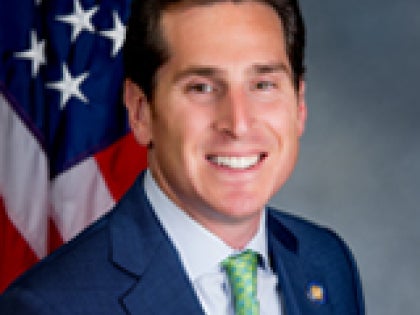
Commentary: History of bigotry and racism imperative lessons for today
A recent proposal by Assemblyman Charles Lavine and Sen. Todd Kaminsky to require New York's middle and high school students to learn about the murderous underpinnings of the swastika and the noose reveals a far larger issue in today's classroom. Simply put, if it's not on the test, it won't be taught, because educators are currently under enormous pressure to meet specific state-mandated testing criteria, and history is no longer a priority.
Over the last several years, teaching history has been marginalized to the point where too many students now view symbols of the Third Reich and Jim Crow's hateful past as mere curios to be scrawled on lockers and sidewalks.
One educator who leads a social studies advocacy group, Gloria Sesso, cautions that the study of World War II currently receives, at most, 90 minutes of class time in the course of a school year. Yet consider: From the horrors of the Holocaust to today's geo-political borders that define the dynamics of the 21st century, World War II continues to cast a long and sustained shadow. It remains the most seminal event of the last 100 years, yet barely gets two class periods of study and discussion.
With violent racism on the rise, Regent Roger Tilles recently appointed a task force to look at this paucity of World War II curriculum. He told the group of educators and activists, "There is an understandable focus on science and math under today's academic mandates, but without the knowledge of how our world came to be some 75 years ago, we run the risk of losing our collective understanding of ourselves, our families, and our nation." If you don't know how racism metastasizes into genocide, you don't have the resources to identify, confront, and kill it in its latest form.
A 2018 report revealed a chilling generation gap when it came to knowledge of the Holocaust. While 11 percent of respondents nationally either hadn't heard of the Holocaust or weren't sure if they had, that number was double among Millennials. In addition, while 41 percent of respondents did not know what the death camp Auschwitz was, that figure was 66 percent among millennials. The implications from those numbers are chilling and provide us with a better understanding of why racist imagery is now so freely deployed.
The lack of class time and formal curriculum has led some educators to conjure their own directions, with very questionable results. In April 2017, in a high school outside of Syracuse, students were assigned an essay that challenged them to argue for and against exterminating the Jews during the Holocaust. Two students told a local news site they were "disturbed" by an assignment that would encourage anti-Semitism.
Our collective indifference to teaching history is revealed elsewhere. Mitchell Riess, then president and CEO of the Colonial Williamsburg Foundation, reported in 2016 that Colonial Williamsburg was attracting only half as many visitors as 30 years ago. It led to a $17 million debt and a reduction of staff. Advancing further into our nation's shared history lesson, there is no national data currently available regarding the classroom study of Reconstruction after the Civil War, the rise of the Klan, and the horrors of lynching that continued into the 1960s, murders that historians have called "America's national crime."
The Lavine-Kaminsky bill may very well jumpstart a thoughtful review of why history has become an afterthought on statewide exams at the end of a school year. Sesso sufficiently posed the issue to our task force with the questions, "Why does such evil arise? Which is the most important cause?" History is the context that allows us not only to understand the issues of past events, but to determine the course of our future.